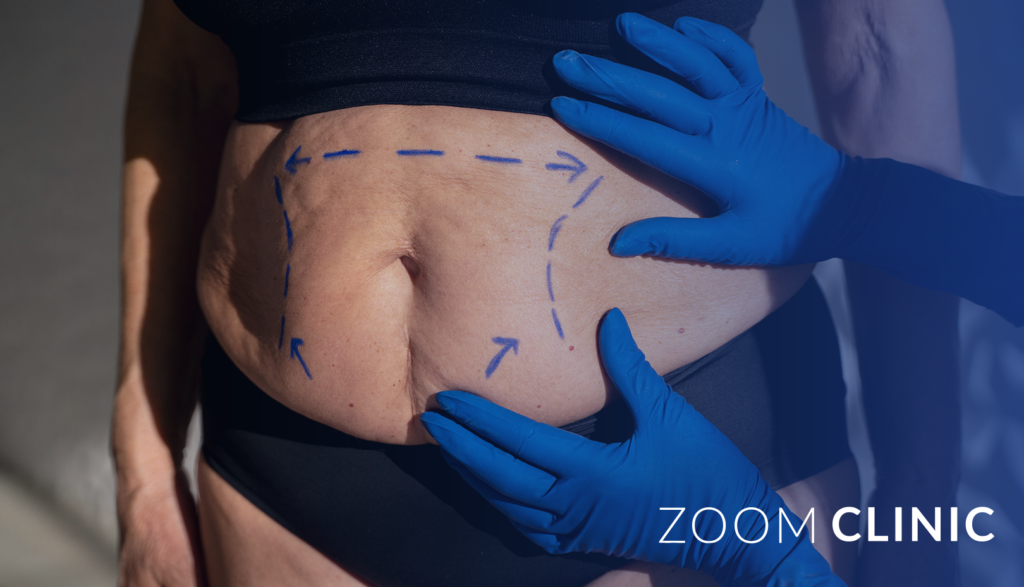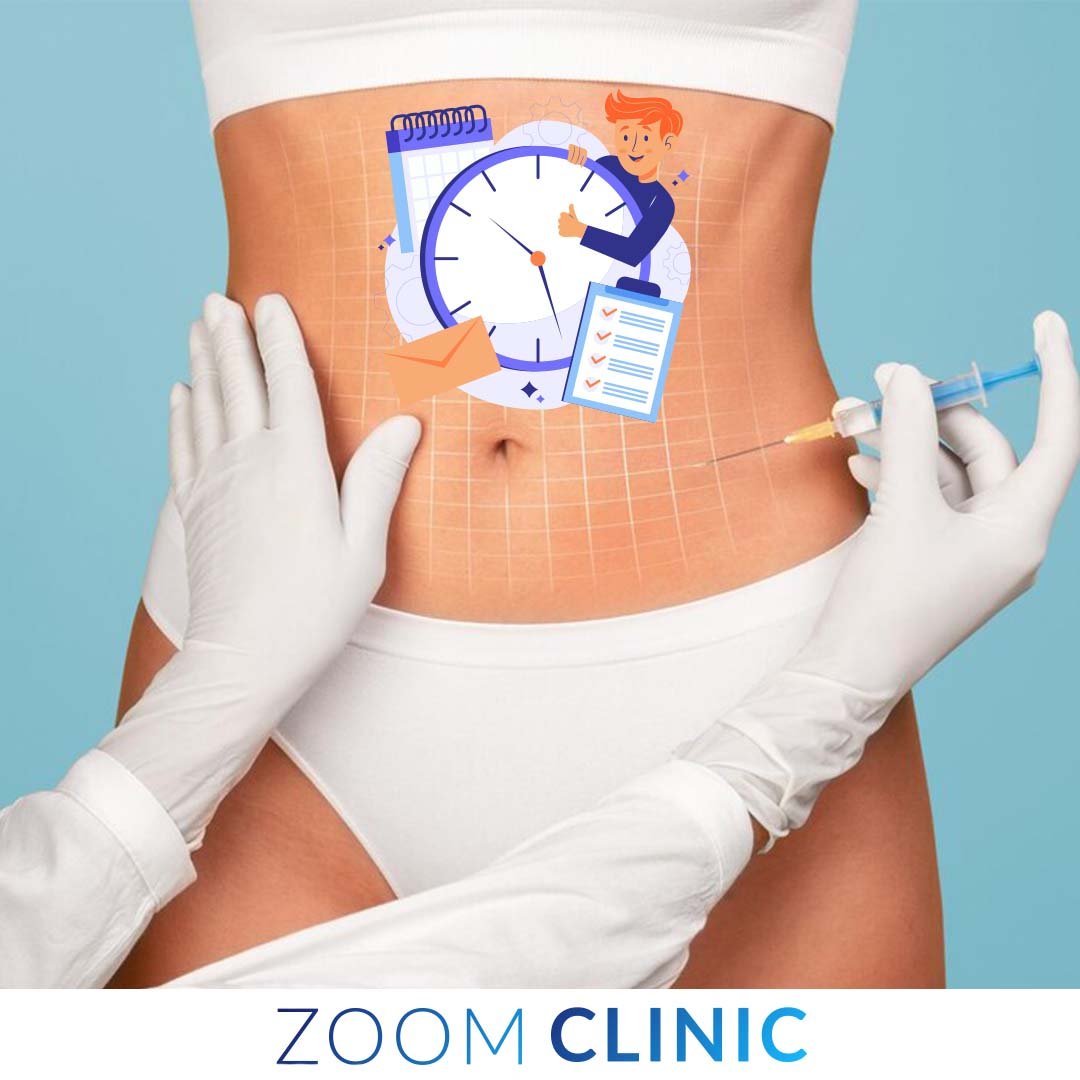Liposuction is one of the most popular cosmetic surgery procedures worldwide. It is widely regarded as an effective solution for removing stubborn fat deposits that resist diet and exercise.
However, prospective patients often wonder about the long-term results of liposuction and how the procedure will affect their body shape, fat distribution, and overall health in the years to come.
This comprehensive guide delves into the long-term outcomes of liposuction, providing insights into maintaining the results, the role of fat cells, and the importance of adopting a healthy lifestyle post-surgery.
Table of content
What is Liposuction?
Liposuction is a surgical procedure to remove excess body fat from specific areas. It is not a weight-loss procedure but a body contouring method that targets localized fat deposits that are resistant to diet and exercise.
During liposuction, a board-certified plastic surgeon uses a specialized instrument called a cannula to suction fat cells from beneath the skin. This procedure can be performed on various body parts, including the abdomen, thighs, hips, buttocks, upper arms, and even under the chin.
How Liposuction Works
Liposuction procedures involve using small incisions through which the surgeon inserts the cannula. The cannula is attached to a vacuum that removes fat cells from the treated areas. There are different techniques used in liposuction, including:
- Traditional Liposuction: This method involves manually suctioning fat cells using the cannula.
- Tumescent Liposuction: A solution is injected into the treatment area to numb the area and reduce blood loss, making fat removal easier.
- Ultrasound-Assisted Liposuction (UAL): Ultrasound energy liquefies fat cells before they are removed, allowing for more precise contouring.
- Laser-Assisted Liposuction (LAL): A laser is used to liquefy fat cells before suction, which can also help tighten the skin.
Areas of the Body Treated by Liposuction
Liposuction can be performed on various areas of the body where stubborn fat deposits tend to accumulate. Commonly treated areas include:
- Abdomen: One of the most popular areas for liposuction, especially for patients with excess belly fat.
- Thighs: Both the inner and outer thighs can be contoured to achieve a slimmer appearance.
- Hips and Flanks: Commonly referred to as “love handles,” these areas are often targeted to enhance body shape.
- Upper Arms: Liposuction can remove fat from the upper arms, creating a more toned appearance.
- Back and Chest: Fat deposits on the back and around the chest area, including “bra bulge,” can be reduced.
- Neck and Chin: Liposuction under the chin can help define the jawline and reduce the appearance of a double chin.
Long-Term Results of Liposuction: What to Expect

Immediate and Short-Term Outcomes
Immediately following liposuction, patients can expect swelling, bruising, and discomfort in the treated areas. These side effects are expected and typically subside within a few weeks.
Compression garments are often prescribed to reduce swelling and support the body’s new contours during the healing process. While some results can be seen soon after the procedure, the final liposuction results may take several months as the body heals and swelling diminishes entirely.
The Role of Fat Cells in Long-Term Results
One key aspect of understanding the long-term results of liposuction is knowing how fat cells behave post-surgery. Fat cells are distributed throughout the body and store fat, which the body uses for energy.
During liposuction, the surgeon removes a specific number of fat cells from the treated areas. Once these fat cells are removed, they do not regenerate, meaning the treated areas will have fewer fat cells permanently.
Fat Distribution and Weight Gain Post-Liposuction
While the fat cells removed during liposuction do not return, it’s essential to understand that liposuction does not prevent future weight gain.
If a patient gains weight after the procedure, the fat may be distributed to other body areas where fat cells remain. For example, if fat cells are removed from the abdomen and the patient gains weight, they may notice an increase in fat in areas such as the thighs, arms, or back.
It is also essential to distinguish between subcutaneous fat and visceral fat. Subcutaneous fat is the fat located just under the skin, which is primarily targeted during liposuction. Conversely, visceral fat is found deeper within the body, around internal organs such as the liver and intestines.
Liposuction does not target visceral fat, which is more closely associated with health risks such as high blood pressure, diabetes, and heart disease. Maintaining a stable body weight and healthy lifestyle is crucial to managing visceral fat.
Maintaining Liposuction Results: The Importance of a Healthy Lifestyle
The long-term success of liposuction depends significantly on the patient’s commitment to maintaining a healthy lifestyle. Liposuction results can be long-lasting, but they are not immune to poor diet, lack of exercise, or weight gain. Here are some key factors to consider:
1. Healthy Diet
A balanced diet is essential to maintaining the results of liposuction. After the procedure, focusing on nutrient-rich foods that support overall health and prevent weight gain is crucial.
Incorporate plenty of fruits, vegetables, lean proteins, and whole grains into your meals while avoiding excessive consumption of processed foods, sugars, and unhealthy fats.
2. Regular Exercise
Exercise is vital to maintaining a stable body weight and enhancing the long-term results of liposuction. Regular physical activity helps burn calories, improve body composition, and reduce the risk of gaining weight in untreated areas.
Combining cardiovascular exercises, strength training, and flexibility exercises can help maintain your new shape and improve overall fitness.
3. Stable Weight Management
Maintaining a stable weight is key to preserving the benefits of liposuction. Significant weight fluctuations can impact your body shape and fat distribution, compromising the procedure results. Aim to achieve and maintain an ideal body weight through consistent lifestyle habits, including proper diet and exercise.
4. Hydration and Fluid Retention
Proper hydration plays a crucial role in overall health and can also help prevent fluid retention, which may affect the appearance of treated areas post-liposuction. Drinking enough water throughout the day helps flush out toxins and supports the body’s natural healing processes.
5. Avoiding Smoking and Excessive Alcohol Consumption
Smoking and excessive alcohol consumption can negatively impact the healing process and overall health. Smoking, in particular, can impair blood circulation, delay wound healing, and increase the risk of complications.
It is advisable to quit smoking and limit alcohol intake before and after liposuction to promote optimal recovery and long-term results.
The Effects of Liposuction on Skin Elasticity and Contour
Loose Skin After Liposuction
Liposuction is highly effective at removing fat cells but does not address skin elasticity. After significant fat removal, some patients may experience loose skin in the treated areas, particularly if they had poor skin elasticity before the procedure. Factors such as age, genetics, and the amount of fat removed can influence the degree of skin laxity.
Non-surgical treatments for Loose Skin
Non-surgical skin tightening treatments may be an option for patients concerned about loose skin after liposuction. Radio-frequency, laser, or ultrasound therapy can help stimulate collagen production and improve skin firmness. These treatments can particularly benefit patients with mild to moderate skin laxity.
Surgical Options for Excess Skin
In cases where non-surgical treatments are insufficient, surgical procedures such as a tummy tuck (abdominoplasty), thigh lift, or arm lift may be recommended. These procedures involve the removal of excess skin and tightening the underlying tissues to create a smoother and more contoured appearance.
Realistic Expectations: What Liposuction Can and Cannot Achieve
Setting Realistic Goals
Liposuction is a powerful tool for body contouring, but it is essential to have realistic expectations about what the procedure can achieve. Liposuction is not a weight-loss solution and should not substitute healthy lifestyle habits. Instead, it is best suited for individuals close to their ideal body weight but struggle with stubborn fat deposits that do not respond to diet and exercise.
Understanding the Limitations
Liposuction cannot address issues like cellulite, stretch marks, or skin imperfections. It is also not intended to treat obesity or visceral fat. Patients with significant weight loss should focus on diet, exercise, and possibly other medical interventions before considering liposuction.
The Importance of Consulting with a Board-Certified Plastic Surgeon
Choosing the right plastic surgeon is crucial to achieving the best possible results from liposuction. A board-certified plastic surgeon has the necessary training, experience, and credentials to perform the procedure safely and effectively.
During your consultation, the surgeon will assess your medical history, body composition, and aesthetic goals to determine whether liposuction is the right option for you.
Combining Liposuction with Other Procedures
Body Contouring Procedures
Many patients combine liposuction with other body contouring procedures to achieve more comprehensive results. For example, a tummy tuck can be performed alongside liposuction to remove excess skin and tighten the abdominal muscles, creating a flatter, more toned appearance.
Fat Transfer Procedures
Another popular option is fat transfer, also known as fat grafting. This procedure involves using the fat removed during liposuction to enhance other areas of the body, such as the buttocks (Brazilian Butt Lift), breasts, or face. Fat transfer allows patients to add volume and contour to specific areas while reducing unwanted fat in others.
Non-Invasive Treatments
Non-invasive treatments such as CoolSculpting, radiofrequency, or laser lipolysis can complement liposuction by targeting smaller areas of fat or improving skin texture. These treatments can be particularly beneficial for maintaining and refining liposuction results over time.
The Long-Term Health Implications of Liposuction
Impact on Metabolism and Fat Storage
One of the concerns patients may have after liposuction is how the procedure will affect their metabolism and fat storage in the long term. While liposuction removes fat cells from specific areas, it does not alter the body’s ability to store fat in other regions.
If a patient gains weight after liposuction, the fat may be stored in untreated areas, which could result in a disproportionate appearance.
Importance of Monitoring Health Markers
After liposuction, monitoring key health markers such as blood pressure, cholesterol levels, and blood sugar is essential. While liposuction can improve body contour and reduce subcutaneous fat, it does not address underlying health issues such as visceral fat or metabolic syndrome. Regular check-ups with your healthcare provider can help you maintain overall health and prevent potential complications.
The Role of Lifestyle Changes
Long-term success after liposuction is closely linked to lifestyle changes. Adopting a healthy diet, engaging in regular exercise, and managing stress are all essential components of maintaining a stable weight and optimizing liposuction results. Patients who commit to these lifestyle habits are more likely to enjoy lasting improvements in their body shape and overall well-being.
The Recovery Process: What to Expect
Immediate Post-Operative Care
After liposuction, patients must follow their surgeon’s post-operative care instructions carefully. This may include wearing compression garments to reduce swelling, taking prescribed medications to manage pain, and avoiding strenuous physical activity for several weeks.
Managing Swelling and Bruising
Swelling and bruising are common after liposuction and can take several weeks to subside. Compression garments help minimize swelling and support the healing process. Patients should also stay hydrated, elevate the treated areas when possible, and avoid activities that may exacerbate swelling.
Full Recovery and Final Results
The full recovery process from liposuction can take several months. While most patients can return to work and light activities within a few weeks, it may take longer for the body to heal fully and for the final results to be visible. Patience is key as the body adjusts and refines its contours over time.
Potential Complications and How to Minimize Risk
As with any surgical procedure, there are potential risks associated with liposuction. These may include infection, fluid buildup, uneven contours, or poor skin elasticity. To minimize the risk of complications, it is essential to choose a qualified and experienced plastic surgeon, follow all post-operative instructions, and attend all scheduled follow-up appointments.
Conclusion: Achieving and Maintaining Long-Term Liposuction Results
Liposuction is highly effective for removing stubborn fat deposits and enhancing body contour. However, achieving and maintaining the long-term results of liposuction requires a commitment to a healthy lifestyle, including a balanced diet, regular exercise, and stable weight management.
By understanding the role of fat cells, the impact of weight gain, and the importance of realistic expectations, patients can enjoy the benefits of liposuction for years to come.
Choosing a board-certified plastic surgeon, following post-operative care instructions, and making sustainable lifestyle changes are all critical components of long-term success.
Liposuction can be a transformative experience, providing patients with renewed confidence and a more refined body shape. With the right approach, liposuction results can be lasting and rewarding.
Get the special offer today from Zoom Clinic
Read Also:
The Perfect Body Shape: A Comprehensive Guide to Achieving Your Ideal Form


